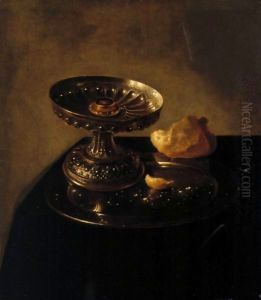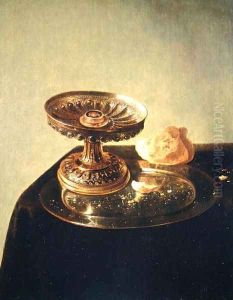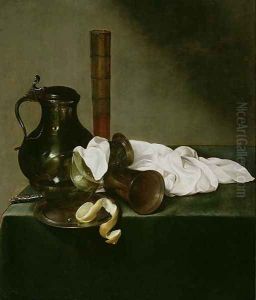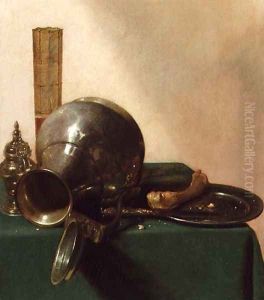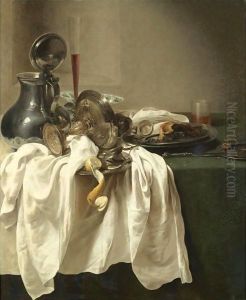Jan Jansz. den Uyl Paintings
Jan Jansz. den Uyl, born in 1595 or 1596 in the Netherlands, was a notable figure in the Dutch Golden Age of painting, a period characterized by an unprecedented flourishing of the arts in the 17th century. Little is known about his early life, including specific details about his family background, education, and training. However, it is widely believed that he was active in Amsterdam, a thriving hub for artists during this period. Den Uyl specialized in still life paintings, particularly breakfast pieces, a genre that depicted various foods and tableware. His work is distinguished by its meticulous attention to detail, sophisticated use of light and shadow, and ability to convey texture, which lent his compositions a striking realism.
Den Uyl's paintings are often characterized by their subtle symbolism, a common feature in Dutch still lifes, where objects might represent moral or religious messages. One of his most celebrated works is 'The Silver Ewer,' which is renowned for its intricate depiction of light reflecting off various surfaces, showcasing his mastery in handling complex visual effects. Despite his talent, Jan Jansz. den Uyl did not gain widespread fame during his lifetime, and his work was only recognized and appreciated by a select group of connoisseurs and fellow artists.
He lived and worked during a time when the Netherlands was experiencing economic prosperity and cultural growth, which allowed for the arts to thrive. The demand for still life paintings was particularly high among the burgeoning middle and upper classes, who sought to decorate their homes with art that reflected their wealth and status. Den Uyl's contributions to this genre, though not as well-documented as those of some of his contemporaries, were significant in their technical skill and aesthetic appeal.
Jan Jansz. den Uyl died in 1639, leaving behind a modest but impactful body of work. His paintings are now considered important examples of Dutch Golden Age still lifes, admired for their beauty and technical precision. Although he did not achieve the same level of fame as some of his peers, his work has been studied and appreciated in more recent times, shedding light on his contributions to the art world. Today, his paintings can be found in several major museums, where they continue to be celebrated for their detail, composition, and the skillful way in which they capture the essence of the Dutch Golden Age.
